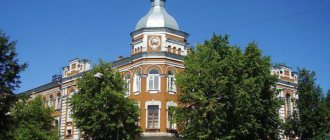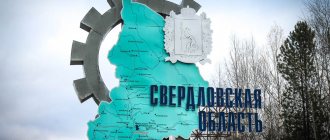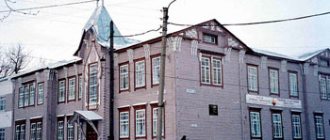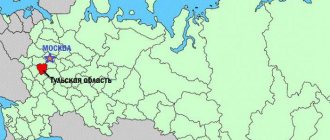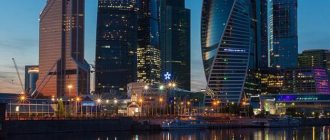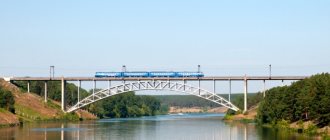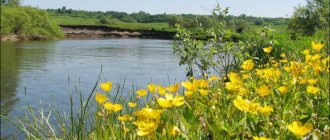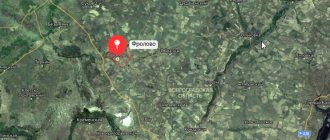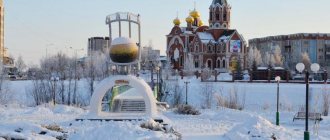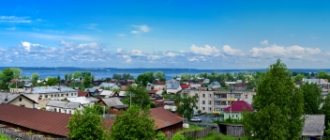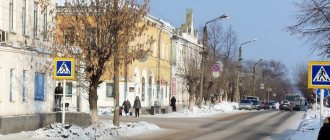Tambov region is a subject of the Russian Federation. Its area is about 35 thousand square meters. km. It is in 63rd place in the list of regions. It is located in the south of the East European Plain. Awarded the Order of Lenin. In total, more than 1 million people live in the region. In terms of population, it ranks 48th among other regions of Russia. There are a total of 307 municipalities in this region. City districts - 7. The list, which can be viewed below, shows the largest cities in the Tambov region. It is compiled according to increasing population size.
- Kirsanov. About 17 thousand people live here. It ranks 737th in the ranking of Russian cities.
- Uvarovo. As of 2016, just under 25 thousand people live here. It is in 585th place (data current as of January 1, 2015).
- Kotovsk. Industrial satellite of Tambov. The population is more than 30 thousand people. Among Russian cities it ranks 495th.
- Morshansk. The administrative center of the district of the same name. About 40 thousand people live here. In the ranking of Russian cities it occupies 395th position in terms of population.
- Rasskazovo. It is a regional center. As of 2016, almost 45 thousand people live in it, ranking 354th.
- Michurinsk. In terms of population, it is second only to Tambov. In 2016, according to the census, the number of residents is almost 95 thousand people. In Russia it is in 181st place.
- Tambov. It is the administrative center. It is home to about 290 thousand people. If we compare other cities in the Tambov region, Tambov is the largest. In Russia it ranks 68th.
In addition to urban districts, there are also municipal districts, urban and rural settlements.
Zherdevka
There are 8 cities in the Tambov region. 7 of them are listed above. The last one is the town of Zherdevka. It forms an urban settlement. Currently, about 15 thousand people live in it. If we compare other Russian cities by population, Zherdevka is in 808th place. Since 2000, there has been a sharp decline in the number of residents. Over 16 years, this figure amounted to almost 4,000. Before receiving city status in 1954, Zherdevka was called the village. Chibizovka. At this time, about 10 thousand people already lived here. If we compare other cities in the Tambov region, this one is considered the smallest.
Urban settlements[ | ]
| № | Name | area | population (persons) | founding/first mention | town status | coat of arms | former names |
| 1 | Dmitrievka | Nikiforovsky district | ↘6940[3] | 1636 | 1966 | Belsky town | |
| 2 | Znamenka | Znamensky district | ↘5088[3] | 1700 | 1971 | ||
| 3 | Inzhavino | Inzhavinsky district | ↘7870[3] | 1705 | 1960 | ||
| 4 | Mordovo | Mordovian district | ↘5618[3] | 1707 | 1968 | ||
| 5 | Muchkapsky | Muchkapsky district | ↘6092[3] | 1730 | 1958 | ||
| 6 | Novaya Lyada | Tambov district | ↘4620[3] | 1762 | 1976 | ||
| 7 | Novopokrovka | Mordovian district | ↘1565[3] | 1908 | 1973 | ||
| 8 | Pervomaisky | Pervomaisky district | ↘11 035[3] | 1831 | 1958 | Tavern (until 1866) Novobogoyavlenskie Vyselki (1866-1958) | |
| 9 | Rzhaksa | Rzhaksinsky district | ↘4101[3] | 1822 | 1938 | ||
| 10 | Sosnovka | Sosnovsky district | ↘7970[3] | 1640 | 1966 | ||
| 11 | Tokarevka | Tokarevsky district | ↘6394[3] | 1928 | 1968 | ||
| 12 | Will clean | Umetsky district | ↘4104[3] | 1710 | 1968 |
Former town[ | ]
- Kotovsk has been a town since 1930. Incorporated into a city in 1940.
- Kochetovka has been a town since 1938. Incorporated into the city of Michurinsk in 1995.
- Uvarovo has been a town since 1960. Incorporated into a city in 1966.
- Chibizovka - transformed into the city of Zherdevka in 1954[4].
Uvarovo
When talking about the cities of the Tambov region, one cannot remain silent about Uvarovo. It occupies an area of 23 square meters. km. City status was received in 1966. It is located on the right bank of the Vorona River. The distance from Tambov to Uvarov is more than 110 km. Over the past 10 years, the population has decreased by more than 4,000. As of 2016, 24.5 thousand people live here. Currently, there are two factories operating in the city - an oil mill and a sugar mill, as well as the Granit-M organization (considered one of the best in Russia). There were other businesses here previously, but they are currently closed. These are brick, vegetable drying, chemical and oil factories.
Kirsanov
Kirsanov , in the Tambov region, regional subordination, district center, 95 km east of Tambov. Located on the border of the Oka-Don (Tambov) plain and the Volga Upland, on the right bank slope of the river valley. Crow, at the confluence of the river. Pursovka (Don basin). Railway station on the Tambov - Rtishchevo line. Highway (Tambov - Saratov). Population 20.1 thousand people (1992; 6.7 thousand in 1861; 10.7 thousand in 1897; 11.3 thousand in 1926; 13.7 thousand in 1939; 15.7 thousand in 1959; 21.8 thousand in 1970; 20.6 thousand in 1979). It was first mentioned in 1702 as a village at the Krasinsky ironworks (it was associated with the ironworks of Lipetsk); The first settler, according to legend, was a native of the village of Ustye Khrisanf (Kirsan) Zubakin, who gave the name to the village. In 1733 the plant was closed and the village was transferred to the palace department. Since 1779, K. has been a district city of the Tambov governorship (from 1796 - a province). In the 19th century K. is a city of merchants and townspeople, the center of a vast agricultural region. A significant impetus for the development of the city was the construction of the Tambov-Saratov railway through Kazakhstan in 1875. By the beginning of the 20th century. becomes a fairly large center for the export of bread and other agricultural products; there were small factories - an iron foundry, a candle-wax and wax-making plant, a lard-making plant, a soap-making plant, several wool washing plants, etc.; there were (1894) 5 churches, the Tikhvin Mother of God Convent (founded in 1846). In 1920-21, Kirsanovsky district was the center of a peasant uprising led by A. S. Antonov. The life and work of the philosopher and lawyer B. N. Chicherin (former Karaul estate), poets E. A. Baratynsky (Mara estate) and A. M. Zhemchuzhnikov (Ilyinovka estate), educator, friend were connected with the outskirts of K. and Kirsanovsky district A. S. Pushkin - N. I. Krivtsova (Lyubichi estate), Decembrists brothers A. and F. Vadkovsky (Gavrilovka village), singer N. A. Obukhova (Mara estate). Modern Kazakhstan is the center of an agricultural region (crops of grain, sugar beets, sunflowers, and fodder crops; livestock raising, mainly dairy and beef cattle breeding). Food enterprises (factories - sugar, skim milk powder, vegetable canning, flour mills, meat and poultry plants), mechanical engineering and metalworking (motor repair), light (garment factory, etc.) industries. Museum of Local Lore (since 1921). The architectural appearance of the central part of Kazakhstan has retained the flavor of a Russian provincial town of the early 20th century. Among the ordinary buildings of the late XIX - early XX centuries. towering cathedral of the Tikhvin Mother of God Monastery (1828-58), the Kozmodemyansk cemetery church (1839; in the interior - wall paintings, artist A. D. Nadezhdin) was the center of the peasant uprising led by A. S. Antonov.
ZHERDEVKA , district center in the Tambov region, 271 km south of Tambov. Located in the southern part of the Oka-Don (Tambov) plain, on the river. Savala (left tributary of the Khoper River, Don basin). Railway station on the Gryazi - Povorino line, 26 km from the Moscow - Tambov - Volgograd - Astrakhan highway. Population 19.2 thousand people (1992; 15.3 thousand in 1959; 17.5 thousand in 1970; 19.2 thousand in 1979). It was formed in 1954 from the station village, the village at the sugar factory (built in 1937) and the village of Chibizovka. Modern Zh. is the center of an agricultural region (cereal crops, sunflowers, and sugar beets; dairy and meat animal husbandry). Sugar, dairy, oil, vegetable canning, mechanical, brick factories. Meat and poultry plant. Elevator. Railway transport enterprises, etc. Museum of Local Lore.
Kotovsk
Kotovsk (Tambov region) was founded in 1914. It forms an urban district. It received city status in 1940. It is located on an area of about 17 square meters. km. It is located very close to the administrative center of the region - Tambov. The distance between these cities is 15 km. Currently, 30.7 thousand people live here. At the end of the twentieth century, the population began to decrease. Since 1996, the number of residents in the city has decreased by approximately 8,000. Kotovsk (Tambov region) is developing in four main industrial areas: mechanical engineering, food, chemical and light industry. In total, there are 7 enterprises in the city, and there is also its own thermal power plant. Currently there are three schools, a boarding school, an industrial technical school, a polytechnic college and creative houses.
A. M. Gerasimov
| Gerasimov Alexander Mikhailovich (1881-1963), Russian painter, People's Artist of the USSR (1943), full member of the USSR Academy of Arts (1947, president in 1947-57). Multi-figure ceremonial compositions, historical and revolutionary paintings (“Lenin on the podium”, 1929-30), portraits, landscapes, still lifes. USSR State Prize (1941, 1943, 1946, 1949). |
Central Genetic Laboratory named after I. V. Michurin
Genetic Laboratory named after. I. V. Michurina Central (TsGL) RAAS, founded in 1934 on the basis of a nursery founded in 1875 (Michurinsk). Development of methods for breeding varieties of fruit crops, breeding and other works.
Other large cities: Morshansk, Kotovsk, Rasskazovo, Uvarovo.
Morshansk
The fourth largest city in terms of population is Morshansk. Situated on an area of almost 19 square meters. km. Previously it was considered a center of grain trade. Until 1779, the modern city of Morshansk in the Tambov region was considered a village. It was called Morsha. However, by decree of Catherine II, the village was transformed into a district town. Currently, almost 40 thousand people live in Morshansk. The food, tobacco, chemical, and cloth industries are developed here. Construction materials are also produced and a locomotive depot operates. Located north of Tambov at a distance of 90 km.
see also
- Tambov Region
- Cities of Russia
| [ + ] Cities by regions of Russia | |
| Cities of the North-West (NWFD) | St. Petersburg (and its cities) • Leningrad region (historical Staraya Ladoga) • Arkhangelsk region • Vologda region • Kaliningrad region • Karelia • Komi • Murmansk region • Nenets Autonomous Okrug • Pskov region |
| Cities of the Volga region (Volga Federal District) | Bashkortostan • Volgograd region • Kalmykia • Kirov region • Mari El • Mordovia • Nizhny Novgorod region • Orenburg region • Penza region • Perm region • Samara region • Saratov region • Tatarstan • Udmurtia • Ulyanovsk region • Chuvashia |
| Cities of Southern Russia (SFD) | Sevastopol (including Inkerman) • Republic of Crimea • Adygea • Astrakhan region • Krasnodar region • Rostov region |
| Cities of the North Caucasus (NCFD) | Dagestan • Ingushetia • Kabardino-Balkaria • Karachay-Cherkessia • North Ossetia - Alania • Stavropol Territory • Chechen Republic |
| Cities of the Urals (Ural Federal District) | Kurgan region • Sverdlovsk region • Tyumen region • Khanty-Mansi Autonomous Okrug - Yugra • Chelyabinsk region • Yamalo-Nenets Autonomous Okrug |
| Cities of Siberia (Siberian Federal District) | Altai Republic • Altai Territory • Irkutsk Region • Kemerovo Region • Krasnoyarsk Region • Novgorod Region • Novosibirsk Region • Omsk Region • Tomsk Region • Tyva • Khakassia |
| Cities of the Far East (FEFD) | Amur Region • Buryatia • Jewish Autonomous Region • Trans-Baikal Territory • Kamchatka Territory • Magadan Region • Primorsky Territory • Sakha (Yakutia) • Sakhalin Region • Khabarovsk Territory • Chukotka Autonomous Region |
| see also | Cities of the DPR, LPR, Transnistria, South Ossetia • Regions of Russia • Cities of Russia |
Rasskazovo
The town of Rasskazovo, Tambov region, was founded in 1697. The village became famous thanks to a peasant who received a royal charter. Residents were mainly engaged in knitting stockings, soap production and leather tanning. In 1744, a distillery began operating, and in 1754, a cloth production began. Thanks to the rapid development of industry, the village began to gradually expand. City status was awarded in 1926. Currently, the area of Rasskazovo is slightly more than 36 square meters. km. In 2016, the number of residents decreased to 44.2 thousand people. It is worth noting that the largest population was almost 51,000 in 1990. Rasskazovo is an industrial satellite town of Tambov.
Cities[ | ]
| № | Name | district / city of regional significance | population (persons) | founding/first mention | city status | coat of arms | former names |
| 1 | Kirsanov | Kirsanov | ↘15 753[3] | 1702 | 1779 | ||
| 2 | Kotovsk | Kotovsk | ↘28 663[3] | 1914 | 1940 | until 1918 — Powder Factory until 1919 — Shock before 1940 - | |
| 3 | Michurinsk | Michurinsk | ↘89 876[3] | 1635 | 1635 | until 1932 - Kozlov | |
| 4 | Morshansk | Morshansk | ↘37 477[3] | 1623 | 1779 | until 1779 - Morsha | |
| 5 | Rasskazovo | Rasskazovo | ↘42 293[3] | 1697 | 1926 | ||
| 6 | Zherdevka | Zherdevsky district | ↘13 825[3] | 1745 | 1954 | until 1954 - Chibizovka | |
| 7 | Tambov | Tambov | ↘289 701[3] | 1636 | 1719 | Tanbov | |
| 8 | Uvarovo | Uvarovo | ↘22 916[3] | 1699 | 1966 |
Michurinsk
The city of Michurinsk in the Tambov region is the second most populous city in the region. It received its modern name in 1932. Previously it was called Kozlov. It was founded in 1635. The modern city occupies an area of 78 square meters. km. Awarded the Order of the Badge of Honor. At the beginning of the 21st century, the population was more than 120 thousand people. However, after 15 years, you can see a significant decrease in the number of residents by almost 25,000. According to the 2016 census, only 94,741 people now live permanently in the city. The city of Michurinsk, Tambov region, is an industrial and cultural center, an important railway junction. For achievements in the agro-industrial complex, it was awarded the status of a science city of the Russian Federation.
Tambov
The most important industrial, cultural and economic center is the city of Tambov. It is the largest in the region. Occupies an area of more than 90 square meters. km. Awarded the Order of the Red Banner of Labor. Currently, almost 290 thousand people live in it. Unfortunately, the city's birth rate is lower than its death rate. That is why the population is gradually decreasing. Main economic sectors: mechanical engineering, technical services, light, food and chemical industries.
I. V. Michurin
| Michurin Ivan Vladimirovich (1855 - June 7, 1935), Russian breeder, author of many varieties of fruit and berry crops, honorary member of the USSR Academy of Sciences (1935), academician of the All-Russian Academy of Agricultural Sciences (1935). He developed methods for breeding fruit and berry plants, mainly the method of distant hybridization (selection of parental pairs, overcoming uncrossability). Michurin's merits in 1912 were awarded the Order of St. Anna, third degree. During Soviet times, he became a cult figure. After Michurin’s death, his name was used by Trofim Lysenko and his followers, who dubbed the mishmash of their pseudoscientific theories “Michurin’s teaching.” |
